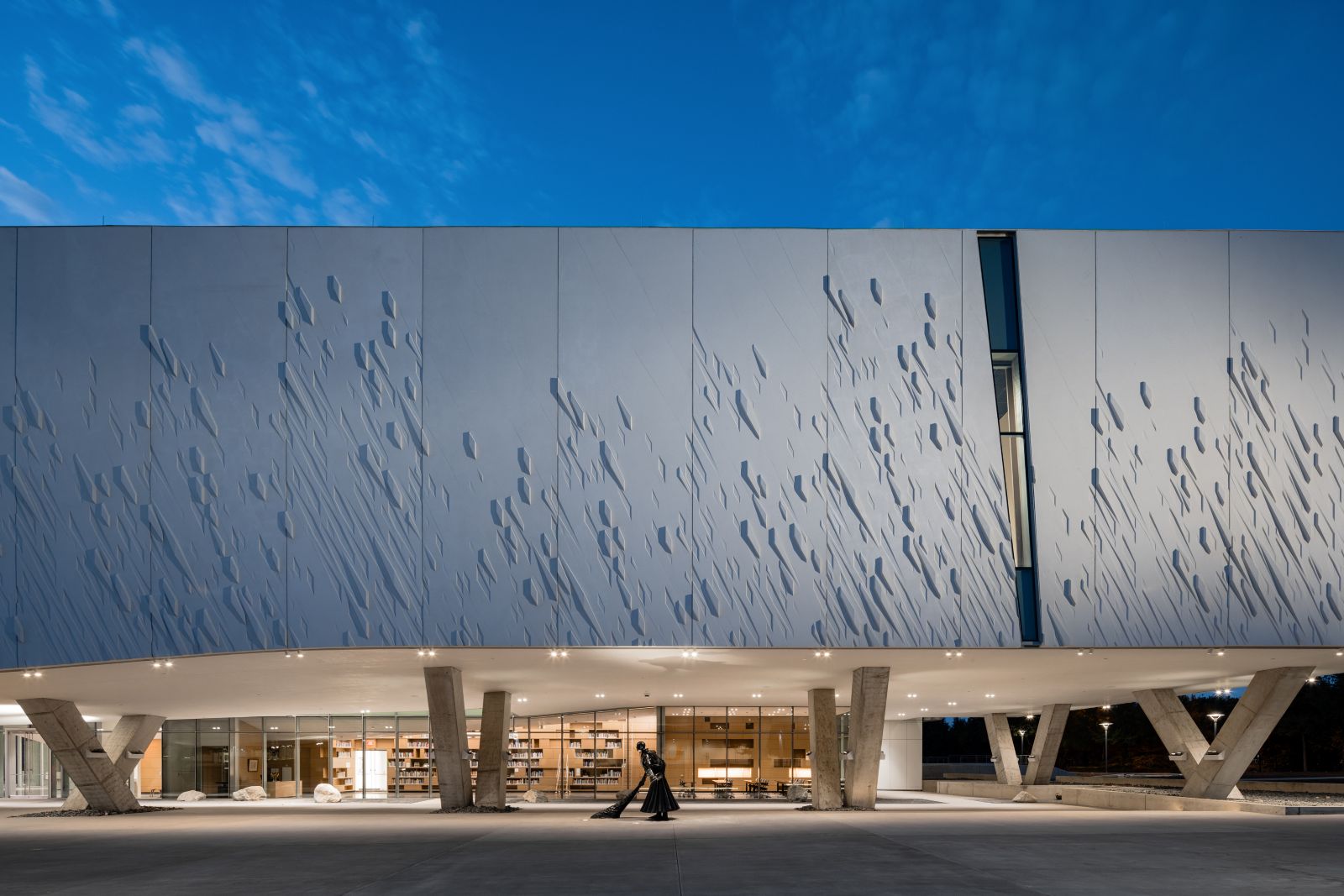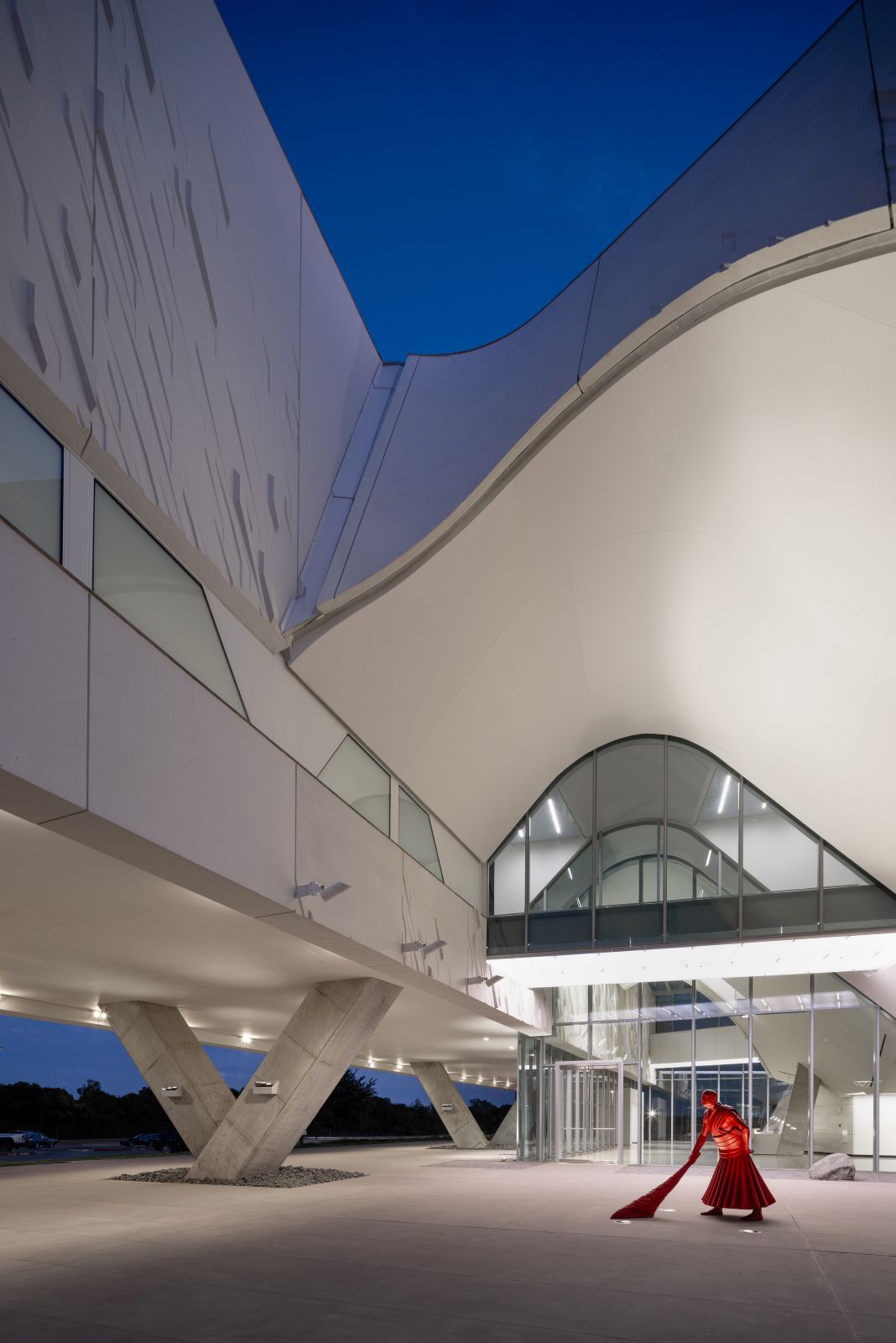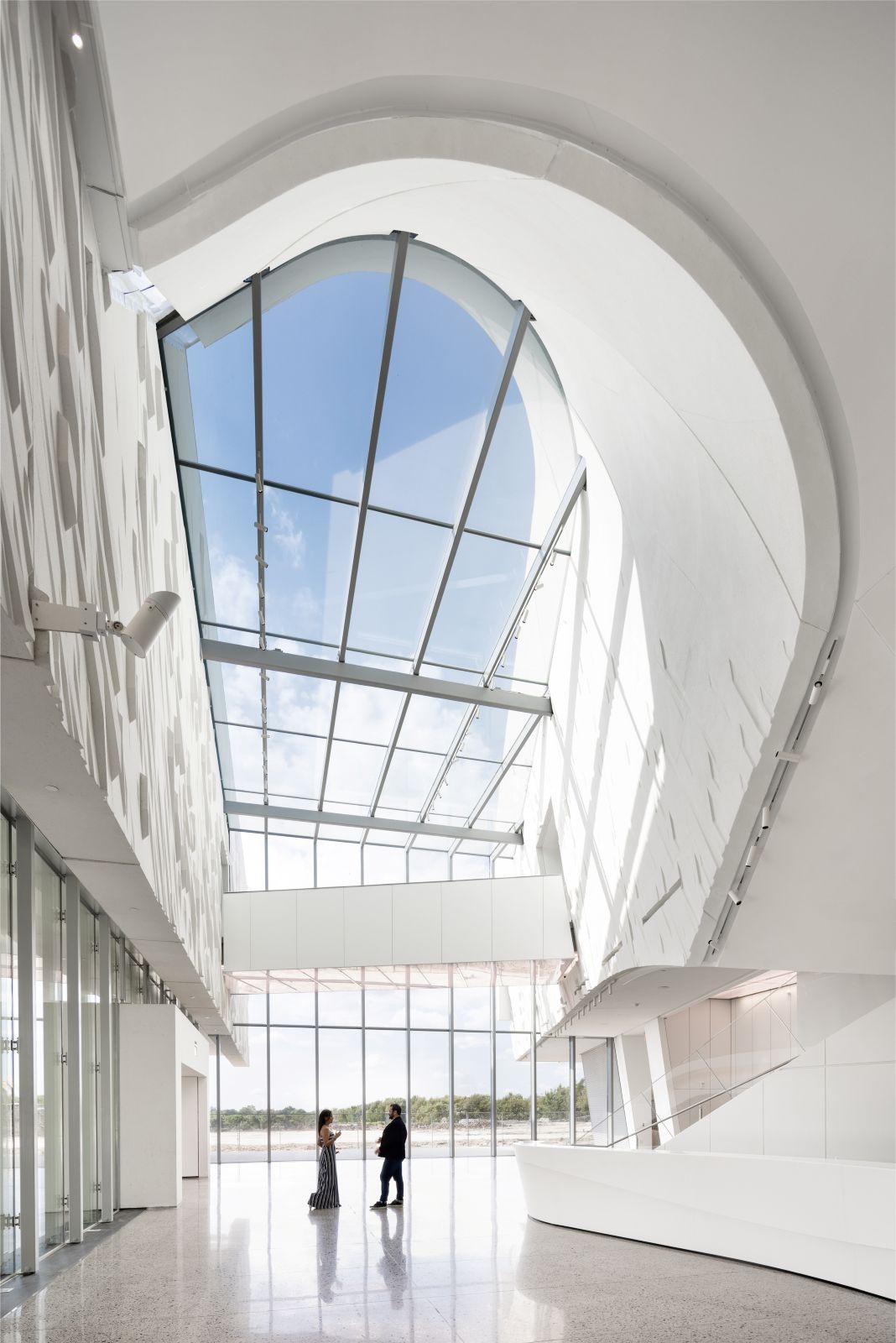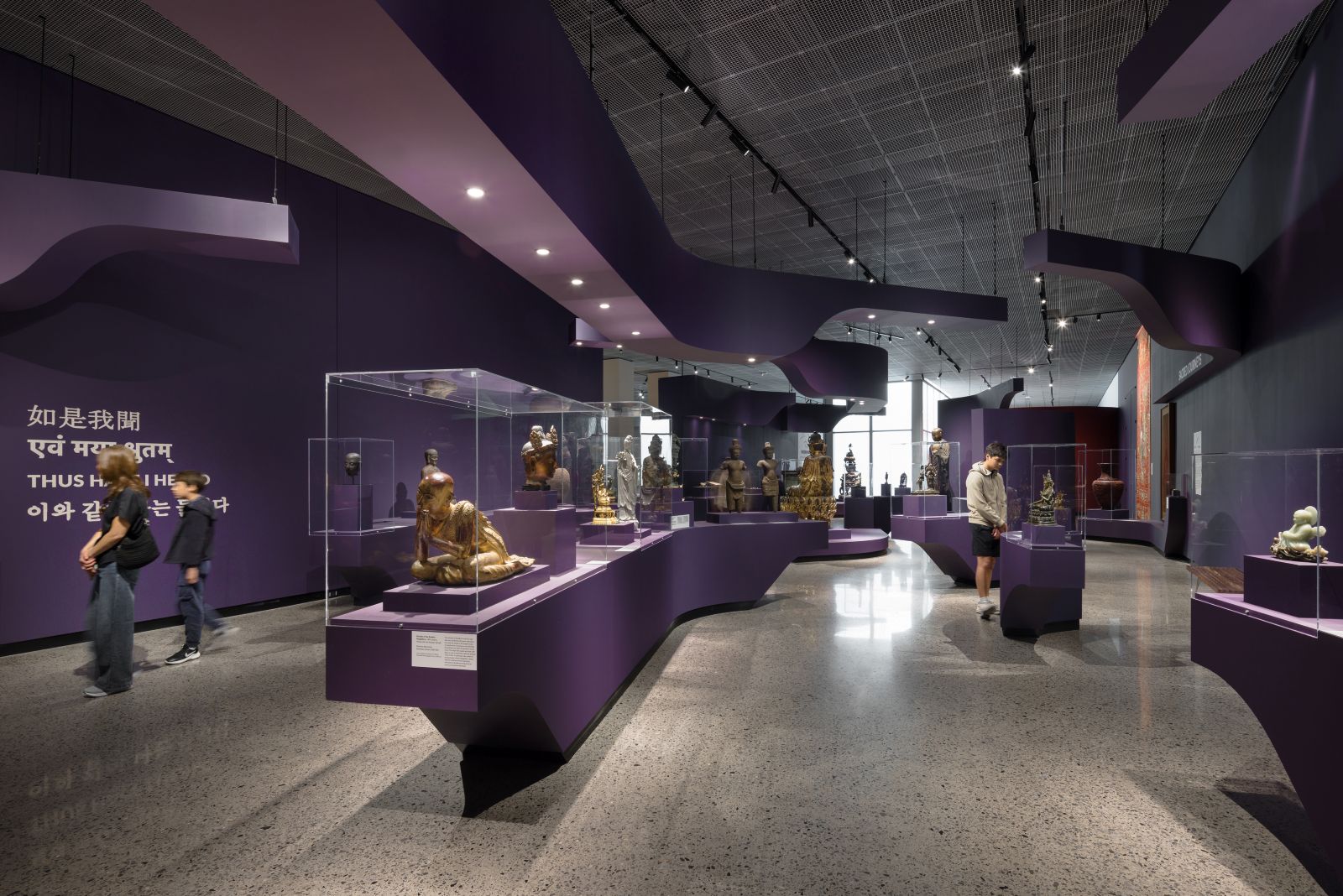The new Crow Museum of Asian Art designed by Morphosis Studio represents the heart of the emerging interdisciplinary cultural district on the University of Texas at Dallas campus, aimed at fostering dialogue between art, architecture and academic research.
iGuzzini, international leader in architectural lighting, has been chosen as lighting partner of the new museum, in collaboration with OVI, and provided tailor-made solutions conceived to create a discreet, integrated and harmonious system in line with the building’s architectural language.
The lighting intervention involved every aspect of the building, both exterior and interior, with a design approach aimed at enhancing the material quality, sculptural volumes and transparency of the architecture, without ever overpowering it.

Outdoor spaces
To light the textured exterior surfaces, Palco projectors were mounted on a minimal number of poles, strategically placed at the building’s corners. This created a grazing effect that highlights the roof’s materiality through light and shadow, while maintaining the integrity of the landscape. This approach also complies with Dark Sky Association guidelines to minimize light pollution.
On the opposite side of the building, which is clad in metal mesh, Linealuce Mini 47 luminaires were discreetly installed within the mesh to provide upward wall grazing light, aligning with Morphosis’s preference for modulating light rather than emphasizing brightness.
To further enhance the impression of a floating structure, Laser Blade InOut fixtures with upward light emission were integrated into architectural pockets at the base of the angled columns that support the cantilevered volumes.

Indoor spaces and exhibition galleries
Lighting also helps guide circulation through the complex architectural layout, with the aim to create distinct atmospheres without extreme contrasts between dim and brightly lit areas. Particular attention was paid to entrance areas, with carefully studied optics and placement of Palco projectors to avoid flattening the architecture.
The first building completed in the Athenaeum was designed to house the Crow Museum of Asian Art and other important collections. The exhibition spaces are located above a ground floor that includes seminar and study rooms, an atrium, and a reading room – all visually connected to the campus through large windows. Palco projectors are used in these public areas, supporting a seamless transition between exterior and interior lighting.
While the building appears as a simple cube from the outside, its interior is composed of curved forms, double-height spaces, and generous glazing. The Superrail system combined with Robin projectors delivers visual continuity across various mounting conditions, whether recessed in coves, integrated into skylights, or suspended.

For skylight installations, an integrated solution was developed to match the aesthetic of the Superrail system and eliminate the need for remote drivers. The drivers were housed internally, helping to preserve clean ceiling lines and avoid visual clutter – an essential objective for OVI.
This Superrail and Robin system continues into the upper-level exhibition spaces, where projectors with a variety of optics – spot, super spot, medium, flood, wide flood, and framers – were chosen to allow for maximum curatorial flexibility.
In these spaces, the suspended Superrail also functions as emergency lighting. Its upward emission is typically off but activates when required, providing a clean and minimal solution using the same lighting infrastructure without adding visual noise. Additionally, Superrail’s modularity allows it to follow the complex architectural geometry, supporting both curved and broken lines in the design.

Art, innovation and technology
With this important project, iGuzzini confirms its role as a partner of excellence in the enhancement of architecture through light, providing tools capable of adapting to complex, iconic and cultural contexts.



